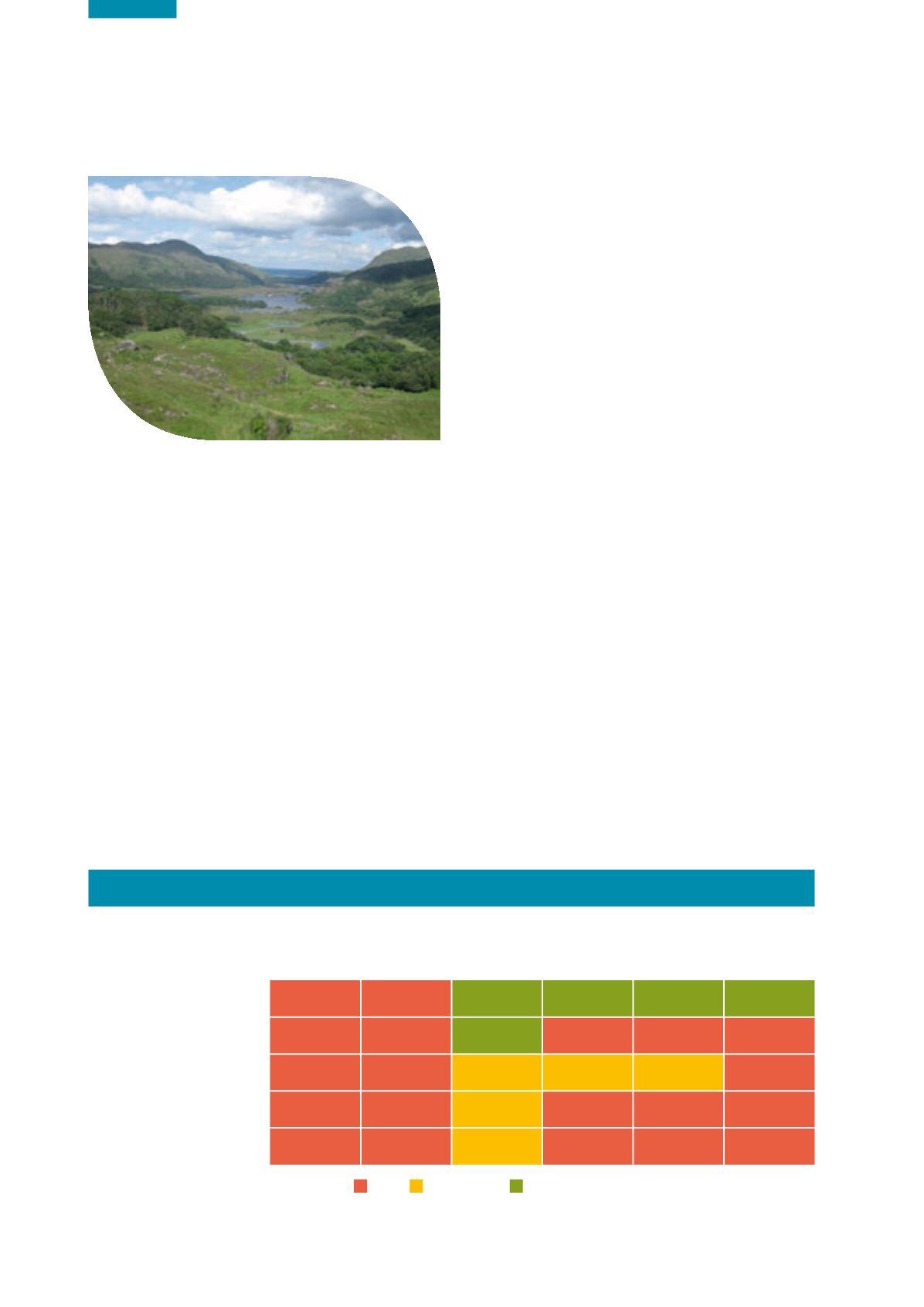

Ireland’s Environment – An Assessment 2016
112
The Central Statistics Office (CSO) has estimated that the
number of one-off houses in 2011 stood at approximately
433,564. The number of dwellings with septic tanks built
between 2006 and 2011 fell from 50,011 in 2006 to
30,895 in 2011; the number with other individual systems
rose from 16,689 to 19,074 over the same period. Between
2002 and 2011, the proportion of houses built that are
stand-alone decreased from 28.1% in 2002, to 27.1% in
2006 and further, to 26.3%, in 2011 (CSO, 2012).
Strategic Planning and Sector Issues
Population growth
Population increase and settlement growth are the
principal causes of land use changes in urban areas.
This has implications for soil quality, climate, biodiversity
integrity, air quality, flood risk and water quality. Ireland’s
population is projected to reach 5.1 million in 2031, with
the most significant increase predicted for the Greater
Dublin Area (CSO, 2013). Forward strategic planning and
new infrastructure are needed to ensure that growth
is sustainable and does not add to the environmental
pressures that are already evident in delivering drinking
water, treating urban waste water and tackling air
pollution.
Agriculture growth
Achieving the aims of Food Wise 2025 (DAFM, 2015b),
without damaging the environment upon which
agriculture depends will be a significant challenge. Many
significant actions are included in this plan, which relate
to sustainable food production and management and
protection of soil quality. This key challenge for Ireland’s
environment is covered in more detail in the section on
“Economy and Agriculture”, but it is clear that the health
of both our soils and our agriculture sector are intrinsically
linked and dependent on one another.
Decline in peatlands
Table 7.2 shows that, between 2007 and 2013, there was
a decline in the range, area, structure and functions and
status of Ireland’s peatlands (DAHG, 2014).
According to the National Peatlands Strategy, only 10%
of the original raised bog and 28% of the original blanket
peatlands resource are suitable for conservation (as natural
peatlands). Land drainage, reclamation for agricultural
purposes and peat extraction have all impacted peatlands.
The damage caused by these activities also has a negative
effect on climate mitigation, as it prevents carbon
sequestration and reduces the available carbon stock as,
when drained, peat oxidises and CO
2
is released. The
emergence of climate change as a key social, economic
and environmental issue has brought fresh impetus to the
need to preserve remaining functional peatlands and to
accelerate the restoration of damaged peatlands.
Table 7.2
Changes in Peatlands Between 2007 and 2013 (Source: collated from DAHG, 2014)
Active raised bog
Degraded raised bog
Active blanket bog
Conclusion
2007
2013
2007
2013
2007
2013
Range
Area
Structures and functions
Future prospects
Overall status
Status code:
= Bad = Inadequate = Favourable


















